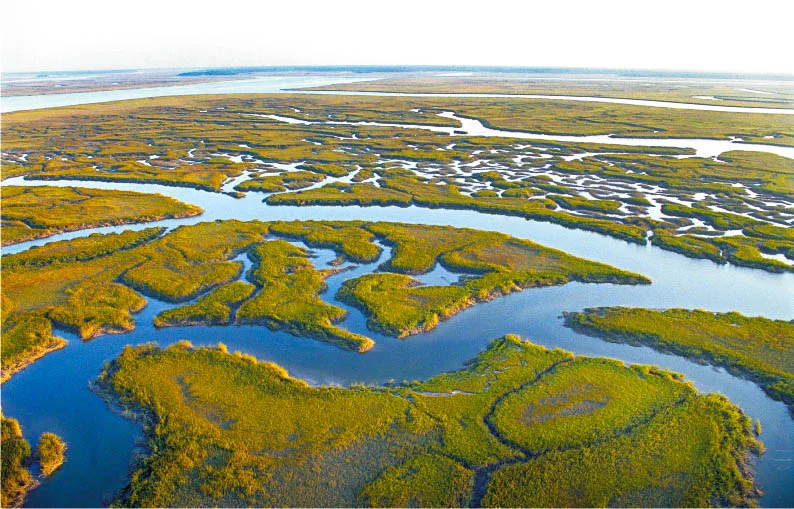Award amount: $1,895,531
IRA funding? Yes
Funding source(s): NOAA
Project duration: 4 years
Why we care
Enhanced weathering is a carbon capture technology that increases ocean alkalinity by adding rocks with ultrabasic minerals, particularly in ecosystems like wetlands and mangroves. This project examines the safety, efficacy, and potential for large-scale implementation of enhanced weathering in tidal wetlands to enhance weathering as a method of carbon dioxide removal and local-scale ocean acidification mitigation.
What we will do
Researchers will test that enhanced weathering, particularly with the rock-forming mineral olivine, leads to a decrease in carbon dioxide released into the atmosphere. Additionally, the study tests that this method increases dissolved inorganic carbon and alkalinity in the porewater and adjacent estuary, and creates a chemical range beneficial for oyster larval recruitment, survival, and growth. The team will conduct experiments at various scales, from the laboratory to field macrocosm, to develop models for olivine dissolution. Laboratory experiments will optimize olivine dissolution rates and assess impacts on various impacts such as the chemistry of soil and coastal seawater and ecosystem health. This small-scale experimentation will inform the design and execution of a field trial where olivine will be applied to a 0.5-hectare salt marsh plot in collaboration with the Herring River Restoration, a salt marsh ecosystem project in the U.S. National Park Service land. The field trial provides an opportunity for the research and regulatory communities to evaluate environmental safety as well as compare measurement, monitoring, reporting and verification technologies. Other outcomes of the field trial include understanding the impact of olivine on soil chemistry, microbial communities, vegetation, and invertebrates.
Benefits of our work
This project evaluates the safety, efficacy, and potential for large-scale implementation of enhanced weathering in tidal wetlands. This while generating wide interaction and training in the array of fields that need to engage with coastal marine carbon dioxide removal.
Investigators
Kevin Kroeger, United States Geological Survey
Grace Andrews, Vesta Corporation
Sophia Fox, National Park Service
Shannon Meseck, NOAA National Marine Fisheries Service
Timothy Smith, National Park Service
Robert Sohn, Woods Hole Oceanographic Institution
Nathaniel Walworth, Vesta Corporation
Aleck Wang, Woods Hole Oceanographic Institution
Read the press release from the Woods Hole Oceanographic Institution and webstory the USGS
Image: Coastal wetlands like this marsh can be a source for carbon sequestration and enhanced weathering for carbon dioxide removal. Credit: Georgia Department of Natural Resources





